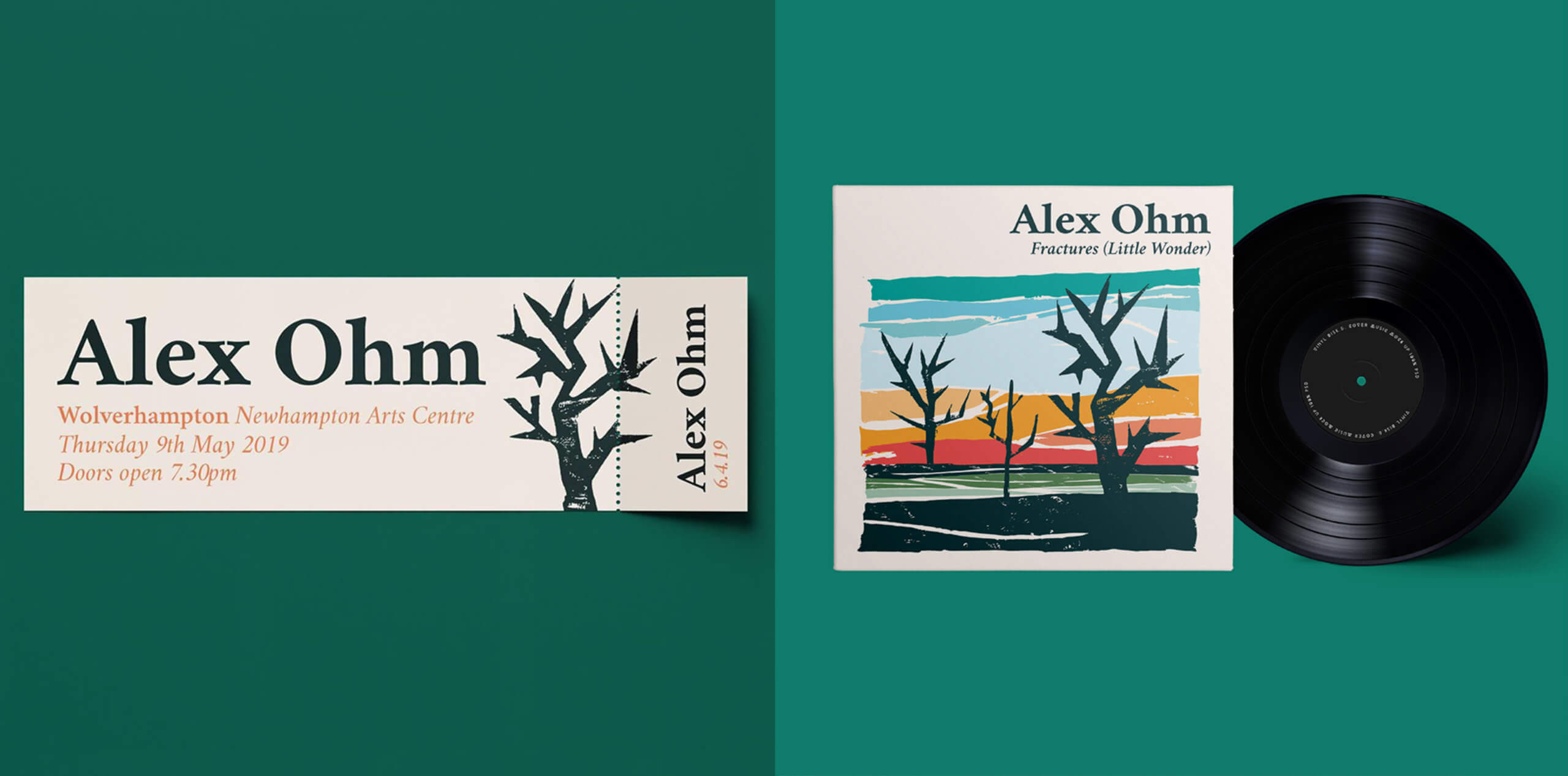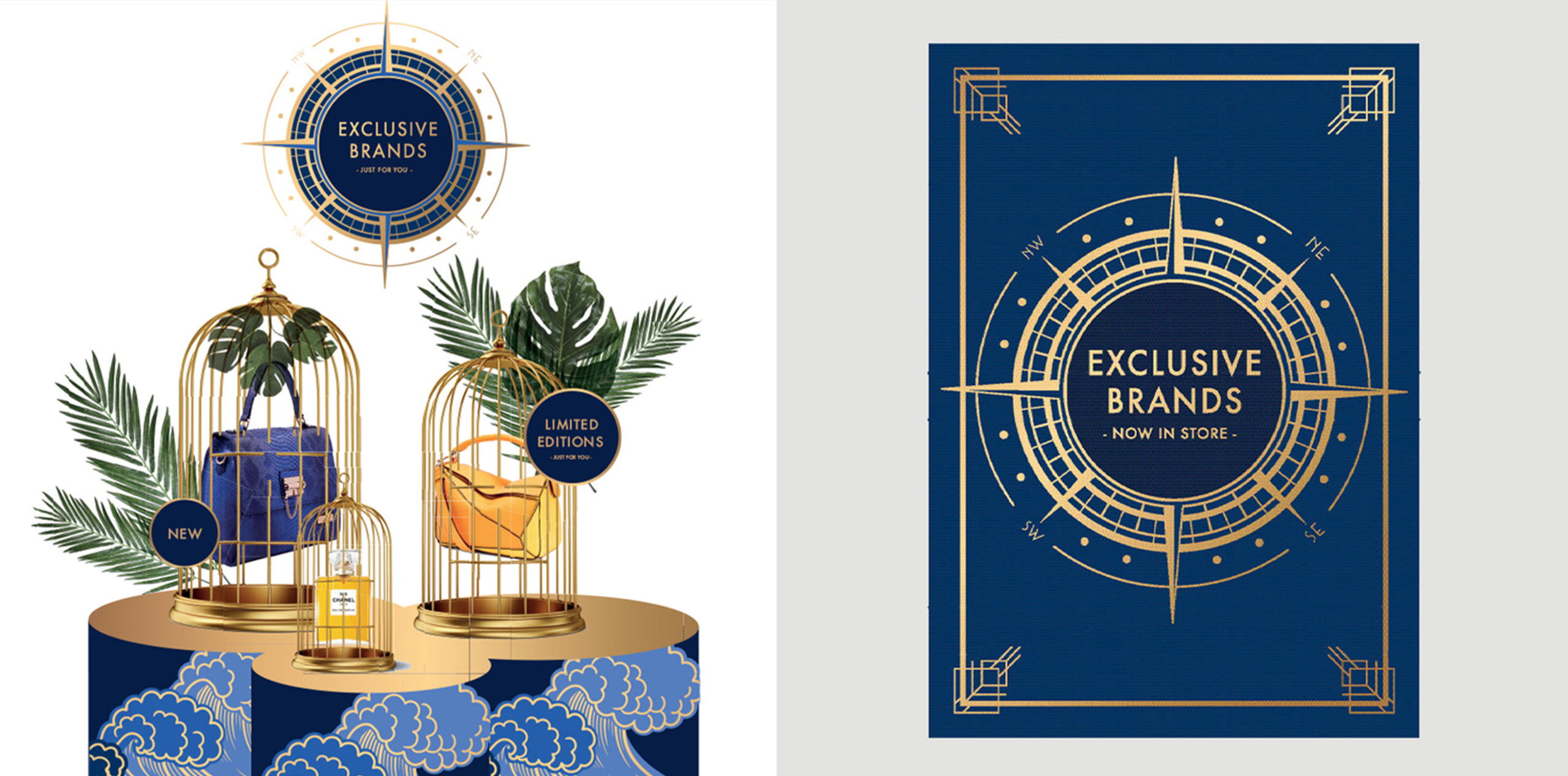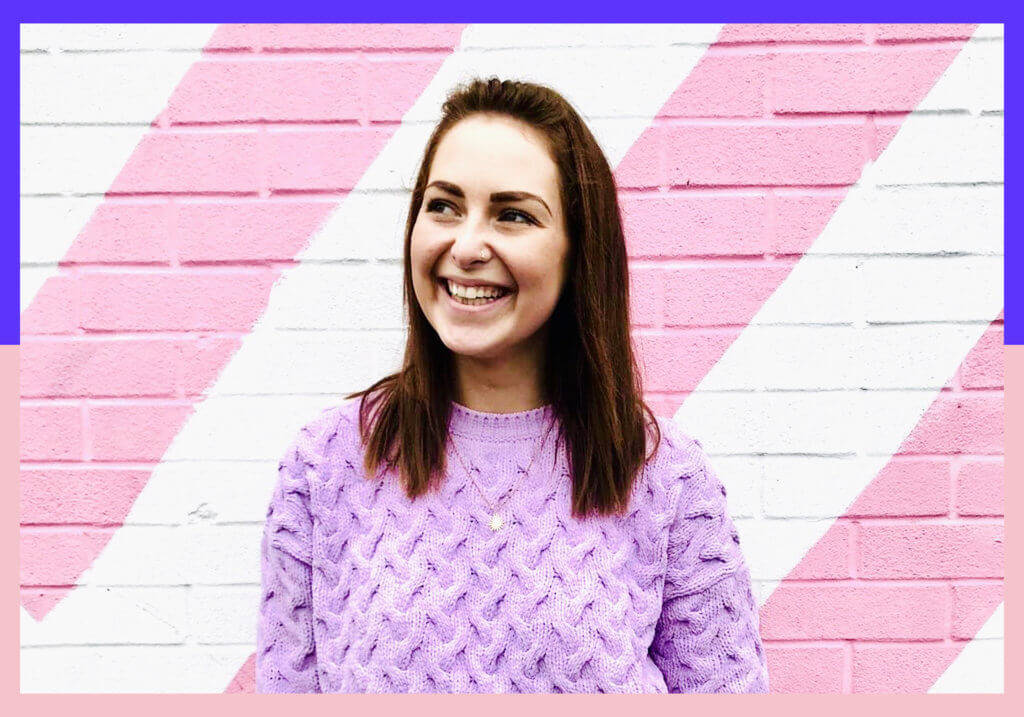Katie Collins is a talented Senior Designer at the award winning marketing agency HDY, based at the Custard Factory in Birmingham (UK). Katie has a strong work ethic and believes that crafting quality design and putting her all into everything is the way to get job satisfaction and enjoyment from her work. Her mantra is, if you believe in your work, your clients will too.
Initially gaining valuable conceptual experience at branding agency Happy Giraffe, Katie discovered a real passion for illustration and branding and has found that, “the best way to learn and grow as a designer is to just get stuck in; throw yourself into the unknown, take risks and chances. You learn pretty quickly which gambles pay off and which don’t but they’re all a valuable learning experience.”
Moving to HDY in 2018 when the agency was founded, Katie has continued to develop her craft and design voice and has grown in confidence when dealing with clients. Her ultimate career goal is to become a creative director. She acknowledges that this can be difficult in such a competitive and demanding industry, especially for a woman, and is not surprised by the small percentage of women making it to the top roles. She believes that the long hours and tight time scales of agency life make it difficult to have a social life and bring up a family for anyone regardless of gender and has seen freelance designers burn out in their early thirties.
She hopes that having more strong female voices in leadership positions in the creative industries will mean that things start to change for everyone. Early on in her career Katie witnessed intimidation from a senior male colleague, and she feels more needs to be done to support anyone who finds themselves in this position to speak up and call out inequality in the workplace. “I quickly learned the ugly truth that rather than being a one-off, isolated incident this was rather the norm within the workplace and because I was on work experience felt I had no voice.” At HDY she now works in an environment surrounded by inspiring females, including Head of Digital Sian Williams and the agencies co-founder and Director Angel Gaskell.
We chatted to Katie to find out more about her experiences as an agency designer and her thoughts on how we can address the inequalities that exist within the creative industries.
How did you first become interested in working as a designer?
I don’t think that I became fully aware of my interest until college but in hindsight I had always felt drawn to be creative. When we were 13, my bestie and I decided we were going to be nail technicians and have our own business together. Unfortunately, it never went any further than pedicuring our mothers for a bit of extra pocket money. Whilst my friend was preoccupied with painting dainty little flowers on pinky fingers and sticking diamantes to everything (“it adds to the joie de vivre” she assured me) I was more interested in what the logo should be, what font would look best on the business cards and which colour palette best reflected a pair of happy-go-lucky kids with six bottles of nail varnish and a nail file between them.
Describe your career path of how you got to where you are now.
I hate to rehash the old cliché of “hard work pays off” (cringe, I know!) but for me that’s literally the case. I threw myself into my degree headfirst and worked my socks off as I was determined to make it. There’s no secret that this industry is tough to crack, so I became slightly obsessed with proving myself and others that I could earn a living doing what I love. Truly, there is nothing more motivating than the prospect of gloating in the face of sceptics. But I digress, it all started when I entered a competition to win an internship at a branding agency over the summer break. Although the internship was originally meant to last for three weeks, I made damn sure to impress to the point that three weeks rolled into four, into five and by the time I left I’d been there a whole four months! Looking back, I think I learned more during that internship than I did during my whole degree course, I suppose that’s how it goes though, you win some you lose some. I was very fortunate to be invited back and offered a full-time position as a junior designer after graduation. I now find myself working for a creative agency in Birmingham and tackling as many new challenges as I can. I’m excited to see what the future has in store for me.

How have you developed over your career so far?
The best way to learn and grow as a designer is to just get stuck in; throw yourself into the unknown, take risks and chances. You learn pretty quickly which gambles pay off and which don’t, but they’re all a valuable learning experience! I absolutely adored my time as a branding designer but deep down knew it was time to diversify. We need to be tech-savvy, constantly on trend and have more in our repertoire than just letterheads and leaflets. Throughout my career how to be myself. In this industry, you’re surrounded by bravissimo and giant ego’s, so my approach of being down to earth with colleagues and clients alike can be refreshing.
What do you enjoy most about being a designer?
For me, the most enjoyable part of being a designer is the initial part of the design journey. Receiving a brief, a thousand and one ideas brimming in my mind and the excitement of not yet knowing where this journey may lead. I love testing out new ideas and seeking inspiration from all around me, finding my muse. The outcome of visual identity projects always has to have a powerful meaning, otherwise it lacks all soul. That soul is very often discovered on the conceptual journey, finding that very core of the brand and that is what I find most enjoyable.

How has being a woman impacted your career?
Being a woman has impacted my career in both positive and negative ways, I’ll start with the latter. In the very early stages of my career I experienced harassment at the hands of a male senior. It is with great regret that I quickly discovered the ugly truth that rather than being a one-off, isolated incident this was rather the norm within the workplace and was viewed as something not worth “kicking up a fuss” over. (I’d like to state that this agency no longer exists and the male in question no longer works in this industry) This was my first taste of the industry and I was made to feel intimidated into complying and questioned my place in the industry and how committed I was to succeed. Now that I’m older and wiser I can see how truly problematic this encounter was and that it was not acceptable in the design industry or society in general. As awful as it was, it’s the unfortunate reality for a lot of women, especially young (and maybe a little naïve) aspiring artists such as I was. That aside, I now work in Birmingham city centre and I’m surrounded by inspiring females who are absolutely smashing through every sexist glass ceiling in the industry (they’re glass for a reason). My director at HDY who is female and is in the driving seat of the agency, is absolutely smashing it.
Recently, there has been lots of discussion in the industry around the gender pay gap and how few women progress into senior positions. Have you experienced this yourself and do you have any thoughts on how we can counteract this imbalance?
It would be remiss for me not to admit that my aim in the industry is to become an art director. However, as I look around me I see that women rarely fill the top roles and it can be a struggle for many women to get to where they want to be (or rather, where they deserve to be). This is in part due to attitudes among male peers, but mainly because women are faced with a choice. Career or babies, the decision is yours. But you can only excel at one. There doesn’t seem to be any sort of balance, especially with creative directors. You are either all in and working all the hours god sends, sacrificing your social life and your family time or you just stay still. Frozen in time, frozen in a position, stifled and stagnating. I think the industry asks too much of designers, not just their time, but their headspace and commitment, and most freelancers I have worked with have experienced major burn out in their early 30’s, forcing them to sacrifice their positions and work for themselves. With the current circumstances and the changes in our economic climate as a result of COVID-19 I hope that women can achieve a better work life balance.

In your experience, do you think there is equality and diversity across the design industry today?
I think we are all learning to become more inclusive and there is a movement to promote racial and ethnic diversity within the creative industry. However, I just don’t think this has gone far enough and there’s a lot to improve on. Recently, amongst all the Black Lives Matter campaigns, one campaign really struck me, that is “Where are all the black designers?” It’s a good question. I want to be a part of the generation that changes the world, and rather than employing women or POC being seen as a tick-box exercise, it is the norm we all aspire to.
Do you have any advice for women considering a career in design today?
Work hard but take a moment to smell the proverbial roses and truly enjoy every single second of it. Every experience (and yes, perhaps some of them will be bad) is still an experience, and eventually you will find your own pathway within your career, just don’t expect it to come handed on a plate.
Where do you see yourself in 5 years’ time?
Hopefully on my own private yacht somewhere nice and warm. Failing that, I’d like to be a well-known name within the Birmingham design community, collaborating with other creatives to create award-worthy projects, and still striving to become an art director within a branding agency.
Which female designer/artist/thinker has most inspired you?
Paula Scher, what a woman!
